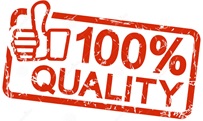- Premium Academic Help From Professionals
- +1 323 471 4575
- support@collegepaper.us
MGMT Situational Leadership II Research Paper
MGMT Situational Leadership II Research Paper
| Order ID:89JHGSJE83839 | Style:APA/MLA/Harvard/Chicago | Pages:5-10 |
Instructions:
MGMT Situational Leadership II Research Paper
Situational Leadership II (SLII) is the most comprehensive, up-to-date, and practical method of effectively managing and developing people, time, and resources in the world. SLII provides leaders with a model and the tools for creating open communication and developing self-reliance in those they manage.
It is designed to increase the frequency and quality of conversations about performance and development. As a result, competence is developed, commitment is gained, and talented individuals are retained. SLII is recognized as both a business language and a framework for employee development because it works across cultural, linguistic, and geographical barriers.
The foundation lies in teaching leaders to diagnose the needs of an individual or a team and then use the appropriate leadership style to respond to the needs of the person and the situation.
For this forum, review the figure 5.2 in the Dugan text. There are four specific leader styles aligned on the chart. They are directing, coaching, supporting and delegating. These are leader styles. There are also the follower’s developmental levels described as D1 – D4.
There is a direct relationship between the follower’s level of competence and the leader’s style. For each developmental level there is an appropriate style of leadership that should be adopted (i.e. a style that depends on the situation).
Select one of the four leadership styles. Choose a specific follower development level (D1 – D4) and give an example of how this leadership style and developmental level would work in real life. In other words, create a “situation” that needs to be led and explain this concept in your forum.
Instructions: Your initial post should be at least 250 words. Please respond to at least two other students.
Directing (S1): Highly directive behavior coupled with lower levels of supportive behaviors; provision of clear instructions about what needs to be done and how to do it; highly structured with regular feedback and monitoring of progress.
Coaching (S2): Both highly directive and supportive; clear structure and direction along with a strong investment in the individual; begins to engage the follower as an active contributor to the process as well as in decision making.
Supporting (S3): Lower levels of directive behaviors coupled with highly supportive behaviors; shared decision making; role becomes that of facilitator to support followers, using their knowledge and skills to accomplish goals.
Delegating (S4): Lower levels of both directive and supportive behaviors; locus of control shifts to the follower for decision making and task direction; focus on monitoring and offering support and growth opportunities. The leader’s style should progress over time from directing th
D1 – Enthusiastic beginner
D2- Disillusioned learner
D3 – Capable but cautious contributor
D4 – Self-reliant Achiever
MGMT Situational Leadership II Research Paper
|
RUBRIC |
||||||
|
Excellent Quality 95-100%
|
Introduction
45-41 points The background and significance of the problem and a clear statement of the research purpose is provided. The search history is mentioned. |
Literature Support 91-84 points The background and significance of the problem and a clear statement of the research purpose is provided. The search history is mentioned. |
Methodology 58-53 points Content is well-organized with headings for each slide and bulleted lists to group related material as needed. Use of font, color, graphics, effects, etc. to enhance readability and presentation content is excellent. Length requirements of 10 slides/pages or less is met. |
|||
|
Average Score 50-85% |
40-38 points More depth/detail for the background and significance is needed, or the research detail is not clear. No search history information is provided. |
83-76 points Review of relevant theoretical literature is evident, but there is little integration of studies into concepts related to problem. Review is partially focused and organized. Supporting and opposing research are included. Summary of information presented is included. Conclusion may not contain a biblical integration. |
52-49 points Content is somewhat organized, but no structure is apparent. The use of font, color, graphics, effects, etc. is occasionally detracting to the presentation content. Length requirements may not be met. |
|||
|
Poor Quality 0-45% |
37-1 points The background and/or significance are missing. No search history information is provided. |
75-1 points Review of relevant theoretical literature is evident, but there is no integration of studies into concepts related to problem. Review is partially focused and organized. Supporting and opposing research are not included in the summary of information presented. Conclusion does not contain a biblical integration. |
48-1 points There is no clear or logical organizational structure. No logical sequence is apparent. The use of font, color, graphics, effects etc. is often detracting to the presentation content. Length requirements may not be met |
|||
 |
 |
|||||
 |
 |
 |
||||
| You Can Also Place the Order at www.collegepaper.us/orders/ordernow or www.crucialessay.com/orders/ordernow
MGMT Situational Leadership II Research Paper |
||||||
MGMT Situational Leadership II Research Paper


